Therapy options for severe spinal disk prolapses
Sven Peters, Naturopath
In order to ensure that the treatment of herniated discs with BICOM is successful, we need to address a few structural basics. A good level of background knowledge is important for the subsequent placement of applicators. In conventional medicine, prolapses are generally separated into 6 degrees of severity.
Degree 1: Clear pain symptomatology
Degree 2: Loss of coordination in the affected limbs (ataxia)
Degree 3: Partial paralysis of the affected limbs (paresis) with a retained ability to walk
Degree 4: Partial paralysis of the affected limbs without the ability to walk
Degree 5: Complete paralysis of the affected limbs (paralysis, plegia) with continued deep-lying pain
Degree 6: Complete paralysis of the affected limbs without deep-lying pain
Caution: The final three degrees should be operated on and subsequently further treated with bioresonance. For degrees 1-3, the application of BICOM bioresonance is worthwhile.
Each disc forms a fibrocartilaginous joint consisting of a fibrous ring (annulus fibrosus) and a gelatinous core (nucleus pulposus). The core consists of over 80% water. Patients with disc issues are recommended to drink sufficient amounts of water. If the core extrudes and therefore puts pressure on the spinal cord, it can lead to stabbing pains in this area. Herniated discs are particularly common in the lumbar and cervical vertebrae. Due to anatomical features, we tend to observe prolapses in the lumbar vertebrae in the L4/L5 area and degenerative discs in the L5/S1 area. In this context, we must also examine the position of the respective transversi (transverse processes). As
a rule, L4 and L5 rotate in opposite directions, e.g. L5, posterior right and L4, posterior left.
Examining patients
We apply pressure with both thumbs to the respective transverse process and if there is an area that is particularly painful, we apply less pressure. For a prolapsed disc, this area is extremely sensitive, and we must proceed with great care. For a prolapse in the cervical vertibrae, we should examine in a similar manner, BICOM optima®lly with the patient lying on their back. We apply pressure to the transverse processes from a dorsal perspective. Then we can begin to create a therapy plan. We must treat up to 2x weekly in accordance with the severity of the condition.
First of all, we test out the placement of applicators, whereby we use the power applicator as an output applicator.
For herniated discs in the lumbar vertebra area/thoracic area
Examples:
Output:
Directly at the point of herniation
Input:
Quadratic applicator above or below the output (if the damage is above L3)
Quadratic applicator on the stomach (ventral)
Possibly a 2nd or 3rd applicator
Output:
On the stomach
Input:
Quadratic applicator at the point of herniation
Possibly a 2nd or 3rd applicator
For herniated discs in the cervical spine
Output or input: Directly at the point of herniation
Output or input: Ventral on the neck
You have already been made familiar with the special placement of applicators in the basic seminar on Therapy Systematics and Effective Allergy Therapy by Dr Hennecke and Ms Maquinay.
We then test out the tried and tested programme:
Disc wear and tear 550.1
Energy deficiency 3035.0
Herniated disc 440.1, 341.3
Nerve pains 911.2
Nerve system 3077.0
Furthermore, we should improve blood circulation in the segment
Blood circulation regulation 3031.0
Blood circulation problems 3032.0
Acute tissue problems 922.3
Chronic tissue problems 923.3
Tissue regeneration 3040.0/925.0
Spinal segment blocked 581.2
Removing blockage 915.2
Shock treatment 3094.0/3095.0/241.4/432.2
Toxin removal in the 2nd session 970
Scar treatment 900/910/927
The pain programme as a basic therapy 425
Procedure
After we have tested out the placement of the applicators, we can now test out all of the relevant programmes. In the 1st session:
Basic therapy
10250
10251
10252
10255
Output on the prolapse
Input: Left hand on the plate applicator + 2nd input applicator on the affected segment
Channel 2
Orthopaedic heel
Zeel
5 elements KTT®
Then we transfer a maximum of 3 more programmes
2nd session in the same week
Test out 3 programmes energetically
Subsequent toxin removal 970
Pain programme 425 (approx. 5-8 min)
3rd session like the 1st session but without basic therapy
4th session like the 2nd session
Should the patient still be in severe pain after the 4th session, I recommend extension with the CU test kit orthopaedics. Now we select all of the blocked spine ampoules, see the 1st examination. For example, L5 posterior right, L4 posterior left L5 and L4 ampoules are put into the input cup. We energetically test the ampoules again with the 191
Arteries
Veins
Injuries
Pains
Scar treatment
Inflammation
Shock treatment
Spinal blockages
Muscles
Ligaments
Sight
Bones
Acute nerve pain
Chronic nerve pain
Vegetative nerve pain
Peripheral nerve pain
On 192
The complete right column
Treat all of the ampoules tested on Ai, plus our findings with the 10325, lay out all of the ampoules tested with A in channel 2 and test the amplification again.
Furthermore, the adjustment of the attenuating magnetic field or alternating (new BICOM-BICOM optima®) magnetic field has been proven.
A weekly change between al- treatment and stored programmes has contributed to a quicker alleviation of symptoms for most of our patients.
Summary
First of all, try to relieve tension from the entire spine with treatments on the cervical vertebrae and cupping. We can treat these in a targeted manner with the CTT test kit orthopaedics.
The next step of treatment is localised treatment on the prolapse or rigid segment. Switch between al- therapy and stored programmes.
